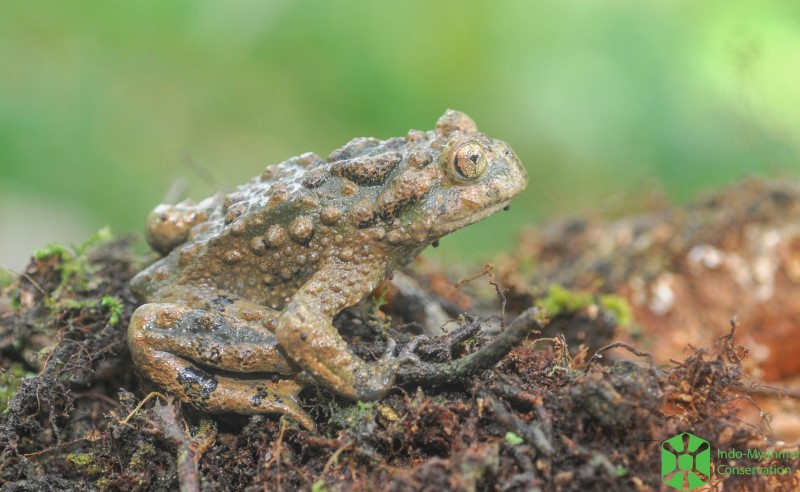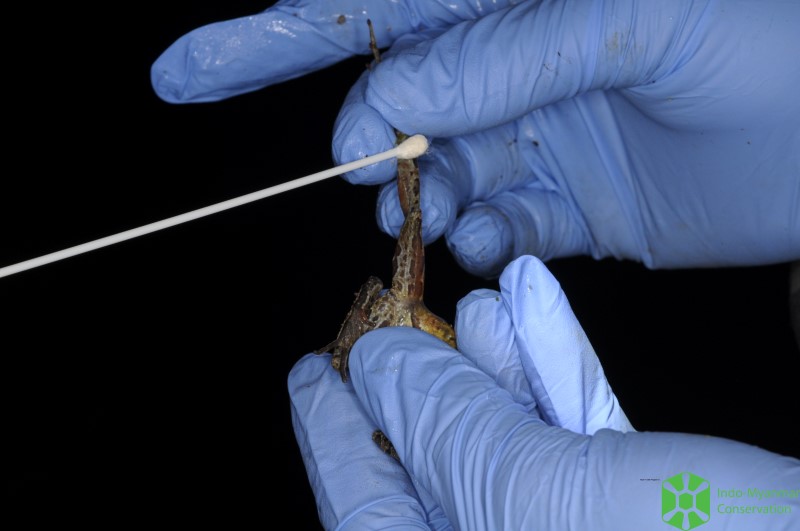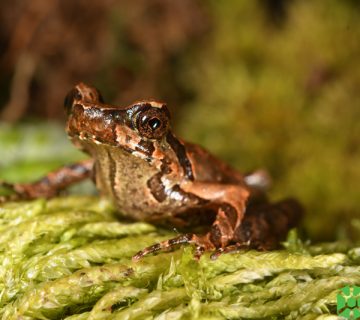Significant 5-year survey on amphibian diseases in Hoang Lien range
One of the largest-scale epidemiological studies ever conducted on the pandemic Chytridiomycosis on Vietnam’s amphibians has found a low prevalence of the disease-causing fungi, a significant, good news story for Vietnam and the global fight for amphibian conservation.
Chytridiomycosis is caused either by the amphibian chytrid fungi Batrachochytrium dendrobatidis (Bd) infecting the order Anura (containing frogs and toads), or Batrachochytrium salamandrivorans (Bsal) infecting the order Caudata (consisting of newts and salamanders). Chytridiomycosis, which was first confirmed as a chytrid fungus in 1998 in Australia, has infected 500 amphibian species worldwide to date, especially those Australia, Europe, and North and South America. It is interesting that the disease has very low prevalence in Asia given that East Asia is known to be the home of these fungi.
Possibly, these fungi are less active or even ‘asleep’ in this origin region. However, due to the pet trade of some Asian species of genus Bombina to the other regions/continents, the fungi have been spread and activated, due to some unknown factors, becoming a deadly assassin to countless amphibians globally. As a consequence, dozens of amphibian species have been pushed to the brink of extinction or gone forever.

Due to the fatal effects of these fungi, many groups of international researchers have been conducting research in new areas where the fungi have not been detected yet to alarm the local authorities to the presence of the fungi, if any, and to propose and provide feasible protective measures.
Nevertheless, in Vietnam, concerns about the state of amphibians and the threats to them were quite limited with little research on these fungi carried out.
International experts, who are fully aware of the fungi’s danger to amphibian populations, have joined up with Vietnamese scientists to detect traces of prevalence of these fungi. Hoang Lien range, a biodiversity hotspot in northern Vietnam, has been selected to be the site of the research.
Since 2015, a group of international and domestic researchers have conducted various field trips to the far and hard reaching mountain-top areas. Up until now, 601 samples belonging to over 40 species, accounting for half of amphibian species known in Hoang Lien Range, have been collected. Specialized, sterile swabs were used to collect samples from different parts of the animal, including on the skin and limbs, to detect trace of the fungi. During this epidemiological survey, strict sterilization procedures have been followed in accordance with the global standards to avoid infectious spread between different areas and individuals.

Swab samples then were sent and analysed at Imperial College London and the Institute of Zoology (Zoological Society of London) in the UK. The results were quite reassuring with only 6 samples, accounting for 1% of samples, being positive for Bd and none positive for Bsal. Moreover, no observed frogs showed any signs of disease. The 6 samples positive for Bd belong to 5 species: Yunnan Firebelly Toad (Bombina microdeladigitora), Common toad (Duttaphrynus melanostictus), Mount Fansipan horned frog (Megophrys fansipanensis), Hoang Lien Horned Frog (Megophrys hoanglienensis), and Sapa Treefrog (Gracixalus sapaensis).
The findings show low prevalence and only a minor impact of the Chytridiomycosis causing-fungi. It is still unclear whether the fungi’s lethal effects could be activated in some way, by unusual weather events and climate change etc.
So far, the survey has been considered the largest ever epidemiological analysis on Chytridiomycosis in Vietnam. It is hoped that the results can highlight the appearance of threats to amphibians and call for the stricter management and control of the pet trade to prevent the further spread of the disease.
This work has been done under a collaboration of scientific staff from the Australian Museum, Indo-Myanmar Conservation and ZSL London Zoo.

Acknowledegments
We are extremely grateful for the support of Nguyen Huu Hanh, Vice Chief of Lao Cai FPD who arranged the office’s work at Bat Xat. We also thank Nguyen Dinh Thang from Lao Cai FPD and Nghiem Trong Tan, both of whom provided support for the field work. We thank the staff at Hoang Lien National Park for their assistance and collaboration. In particular, we would like to thank Nguyen Huu Hanh (Director) and Nguyen Quang Vinh (Former Director) for continued support and partnership. The Vietnamese Ministry of Agriculture and Rural Development and staff at Hoang Lien National Park kindly facilitated surveys and issued permissions. We thank Tim Cutajar and Luke Harding for their assistance in the field and we thank Trenton W. J. Garner for comments on the draft manuscript the use of laboratory facilities. We would also like to extend our thanks to the People’s Committee of Lao Cai Province for supporting this programme of research.
This work was supported by Ocean Park Conservation Foundation Hong Kong and an EDGE Fellowship from the Zoological Society of London, Morris Animal Foundation, the Leverhulme Trust, the Natural Environmental Research Council and a PhD DTP award by the ICL Grantham Institute.
For more information on this study, please refer to:
Tapley, B., Jervis, P., Nguyen, L.T., Portway, C., Nguyen, C.T., Luong, H.V., Kane, D., Brookes, L., Perkins, M.W., Ghosh, P., Wierzbicki, C., Shelton, J., Fisher, M.C. & Rowley, J.J.L. (2020). Low Prevalence of Batrachochytrium dendrobatidis Detected in Amphibians from Vietnam’s Highest Mountains. Herpetological Review. 51(4), 726–732.
Press release: Nguyen Thanh Luan & Bich Kieu – ATP/IMC
Date: 16th December 2020









No comment